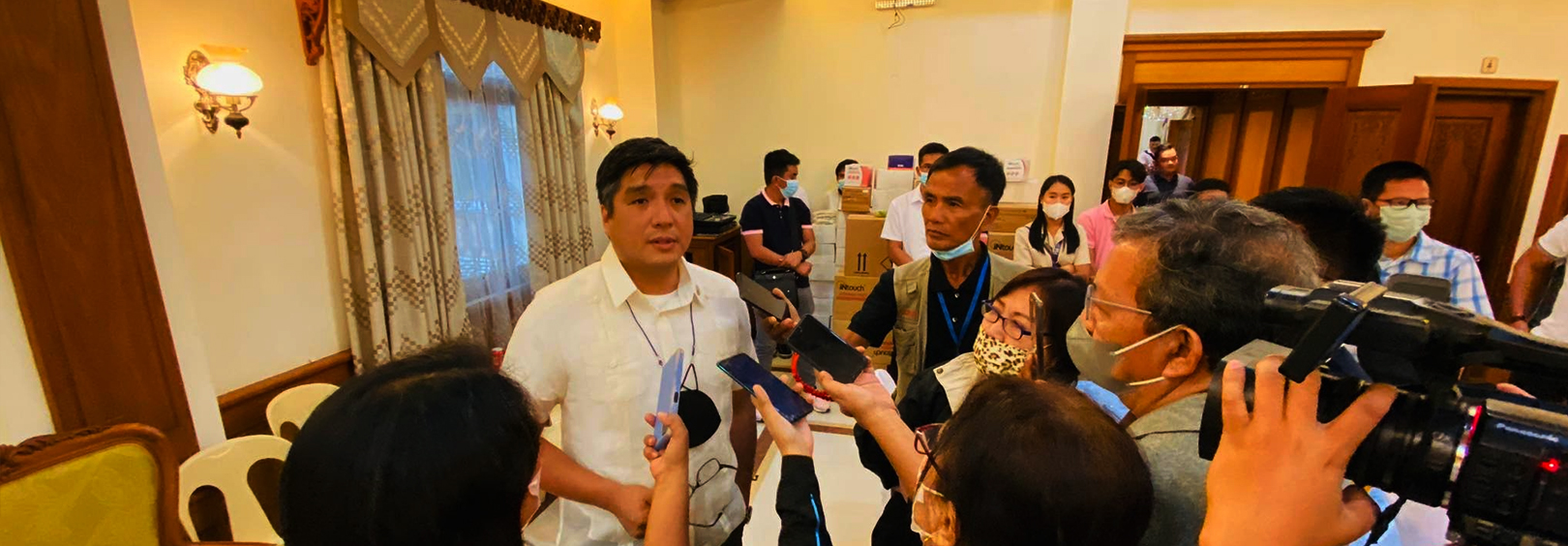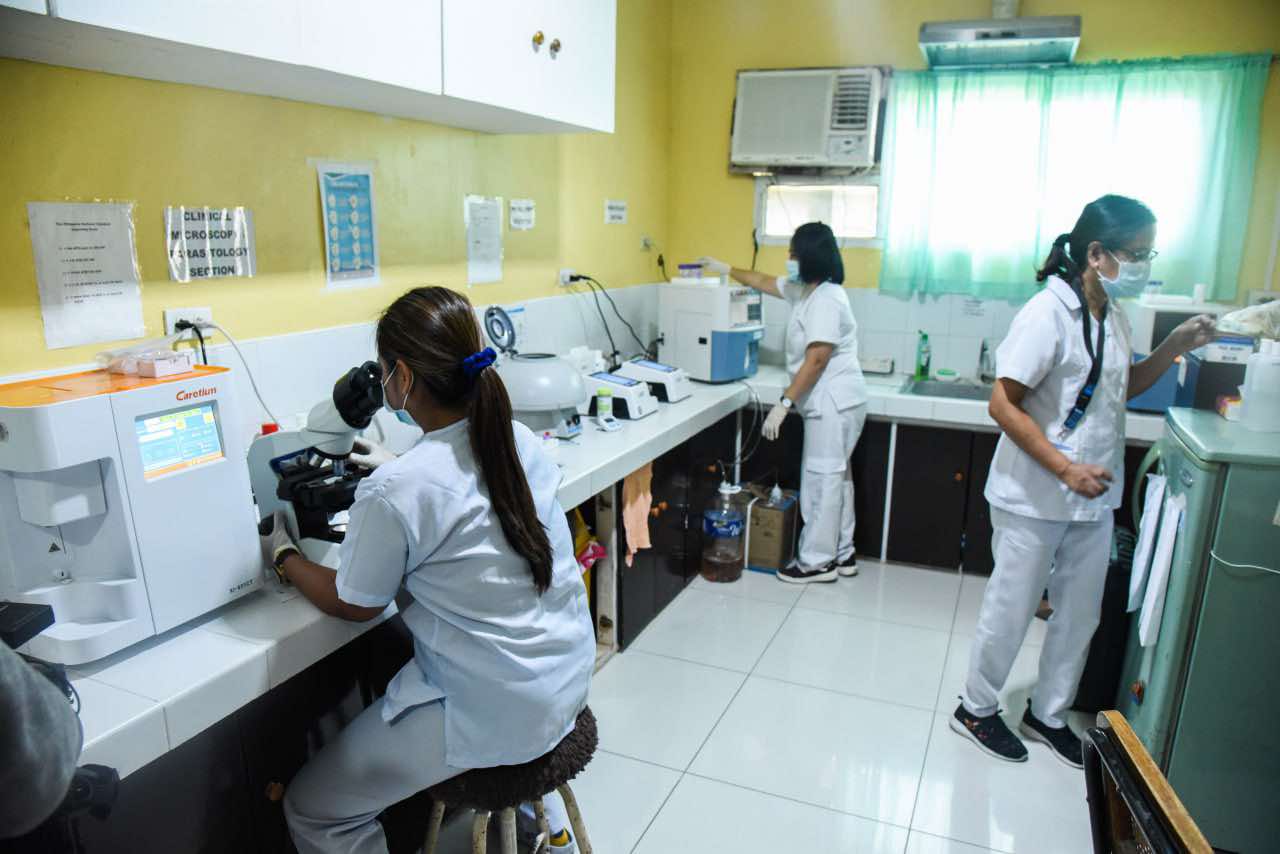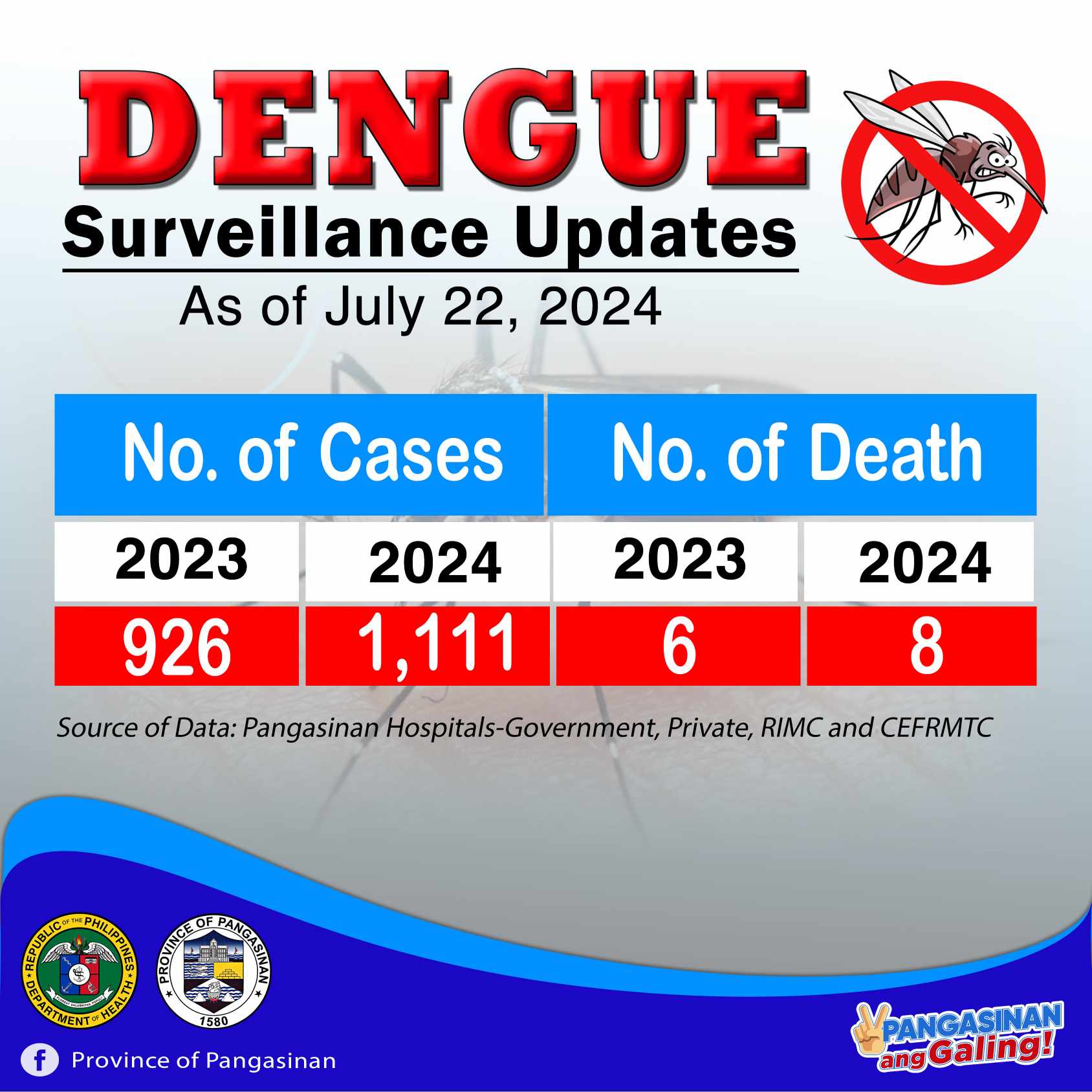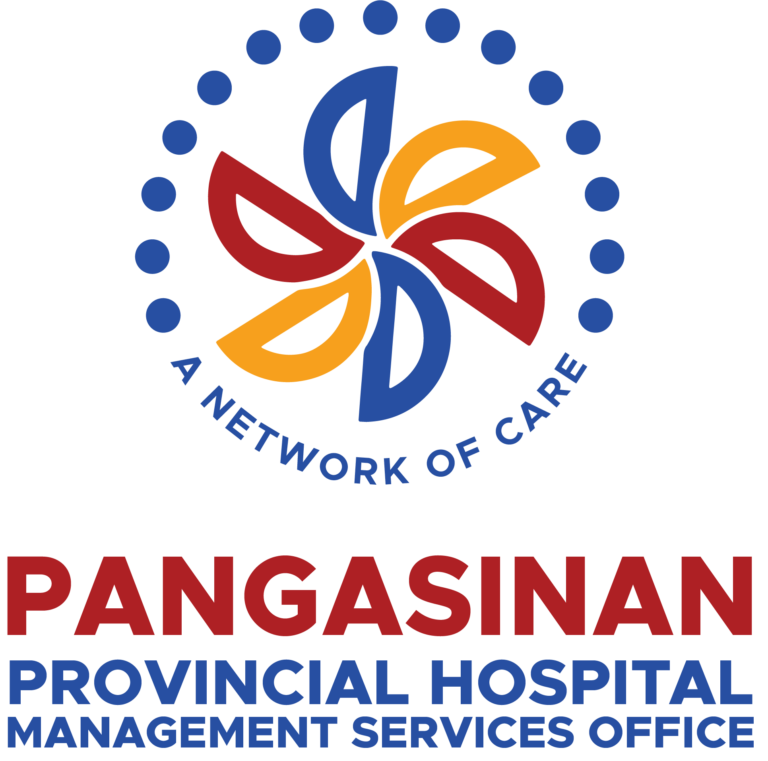The Provincial Health Office (PHO) is intensifying its health campaign following the rise in dengue cases in Pangasinan.
Dr. Anna Ma. Teresa S. De Guzman, provincial health officer, said that PHO has recorded 1,111 cases and eight deaths from January 1 to July 22 this year. This is higher compared to 926 cases and five deaths recorded in the same period last year.
Municipalities and cities under the PHO watchlist are Lingayen, which has the highest recorded dengue cases with 210; Bayambang (85); Bugallon (79); Urbiztondo (75); San Carlos City (71); Binmaley (55); Mangatarem (53); Labrador (49); and Calasiao (35).
Meanwhile, the eight reported deaths were traced in the towns of Lingayen (5), Sual (1), Binmaley (1), and San Carlos City (1), respectively.
The PHO, together with the 14 provincial government-run hospitals, has further intensified its preparedness, prevention, mitigating measures, and health campaign, particularly on the 4S (Search and Destroy Mosquito Breeding Sites; Self-Protection Measures; Say No to Indiscriminate Fogging; and Seek Early Consultation).
Dengue insecticides were also provided for fogging and misting.
PHO likewise conducted consultation meetings and collaboration meetings with various stakeholders, particularly barangay officials, and enjoined the environmental and vector control program managers for the ‘Brigada Eskwela’ to ensure the protection of students, especially with the upcoming opening of classes.
“Kasama din po sa mga ginagawa natin ay yung patuloy na pag conduct ng Blood Mobile donation,’ yun pong ating ‘Blood Letting’ program kasi naghahanda kami at nag-iimbak tayo ng safe and quality blood para kung sakali man na may mangangailangan ng dugo, meron tayong makukuha or may magagamit ang ating mga kababayan,” Dra. De Guzman added.
Symptoms of dengue include fever, headache, muscle and joint pains, swollen glands, pain behind the eyes, rash, nausea, and vomiting, among others.
Aedes aegypti is a day-biting mosquito that causes dengue or hemorrhagic fever, affecting primarily the vulnerable groups, which are children aged five to 15 years old.
‘Pinaiigting ng mga hospitals ang kapasidad nila na sumuri ng ating mga pasyente. Alam din po natin na may mga pediatrician tayo kaya kung mga bata ang affected, pinakamainam ay mabigyan sila agad ng agarang lunas, masuri sila at mabantayan ng sa ganun ay hindi mag progress ang kanilang mga sakit at hindi magkaroon ng kumplikasyon na mangangailangan ng mga dugo,’ Dra. De Guzman said.
(Chona C. Bugayong, with reports from Ms. Terry Aquino/PIMRO)
























